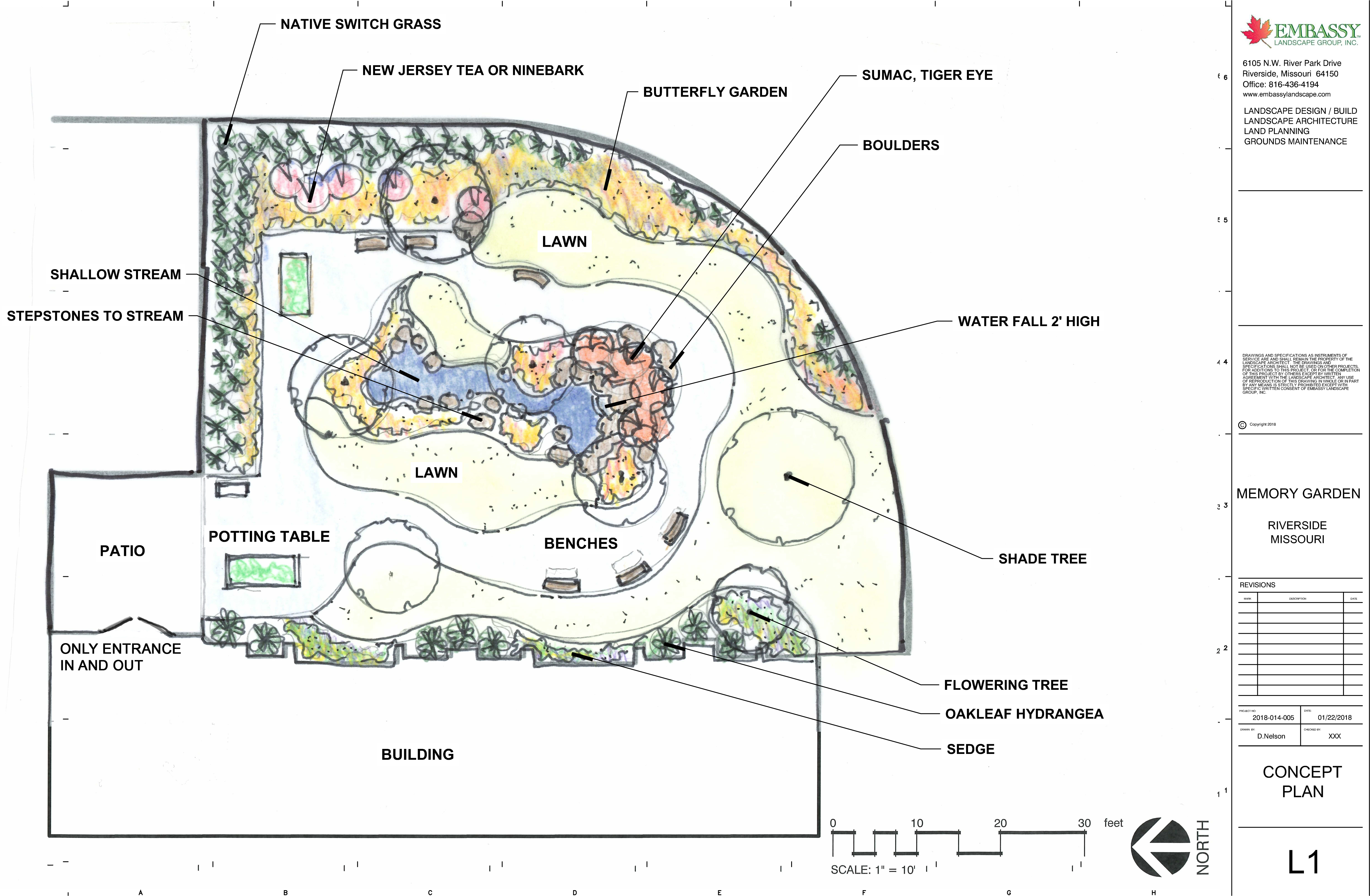Watching someone you love slowly disappear from the present, fade into the past and eventually lose the ability to function is both frustrating and painful. Millions of American families are currently experiencing these emotions as their loved ones struggle with the challenges of Alzheimer’s Disease. It is the 6th leading cause of death in the United States and every 65 seconds someone in the United States develops the disease. There are 5.7 million Americans now living with the disease and by 2050, this number is projected to rise to nearly 14 million people. (Statistics taken from the National Institute on Aging) Currently, there is no cure for this insidious disease that robs individuals of the capacity to “think, reason and remember.”

November, as Alzheimer’s Awareness month, seems a good time to look at what is fast becoming a valued support tool in the management and treatment of this formidable disease — Memory or Healing Gardens.

Although the concept of a healing garden is certainly not new — medieval cloisters often had hidden courtyard gardens designed for healing purposes. Monks not only grew medicinal herbs in these gardens, but also set aside portions of them to meditate and pray in a protected, but nature-filled setting. They understood and utilized the restorative power of nature for themselves and for the physically and mentally sick in their care.

The 1700 and 1800s saw another resurgence of healing gardens. German horticulturists, emphasizing the curative powers of nature, published detailed plans for hospital and institutional gardens. The designs included pathways for walking, benches for sitting, beds of brightly colored, fragrant flowers and clusters of open, airy trees. English institutions designed for the wealthy, embraced the German philosophy and added spaces to promote activity as part of the healing process. In our own country, Frederick Law Olmstead, often referred to as the father of landscape architecture, designed hospital landscapes that featured porches for sitting with views of nature and open spaces that encouraged daily physical interaction with nature.

Today, brain studies are beginning to verify what those in the past instinctively knew — immersion in nature challenges and changes the brain and the body for the better. Research has proven that cognitive function is improved with access to nature. Levels of stress hormones in the bloodstream decrease and impulsivity is reduced. Dementia patients show increased ability to concentrate.

Dan Nelson, Senior Designer at Embassy Landscape Group, recently designed a Memory Garden for a local care facility. In our discussion, he pointed out that a healing garden designed for Alzheimer’s patients, although similar to a typical wellness garden, needs to include some specific elements based on the needs of individuals with the disease. He shared those standards, along with his design.

- Safety and security are paramount to the success of the design. Walkways need to be smooth surfaced, non-glaring and wide enough to allow wheelchair access and for people to be able to walk side by side.

- Although gardens need to be enclosed to prevent dangerous wandering, barriers should be hidden or designed to blend in with the natural surroundings.

- Circular pathways with no dead ends are best. They seem to reduce anxiety in dementia patients since there is a clear sense of which direction to head. No confusing choices must be made.

- The single entrance/exit to the garden must be obvious.

- Benches are strategically placed in both sunny and shady areas to provide safe, comfortable spots to “regroup.”

- Plantings are comprised of safe, non-toxic selections. Thornless varieties should be selected since dementia patients often put things in their mouths and randomly grasp them with their hands.

- Butterfly gardens filled with brightly colored, familiar and often fragrant plants are recommended. Researchers believe that seeing familiar sights can trigger memories and sometimes help patients remember and recognize loved ones they have forgotten.

- Elements of sound and touch are also important in resurrecting buried memories and in shaping emotions. Carefully designed, shallow flowing streams or waterfalls provide tactile, visual and auditory cues for patients.

- Participation in gardening activities helps to reconnect Alzheimer’s patients to the cyclical nature of life. Potting tables or raised beds provide easy access for patients.

While Memory Gardens cannot offer a cure to Alzheimer’s patients, research does show that they can help prompt memory, prod recognition and promote independence, all important factors in keeping individuals tied to the present and to those they love. Knowing the enormous wellness benefits gardens offer, shouldn’t all Alzheimer’s patients have access to one?
